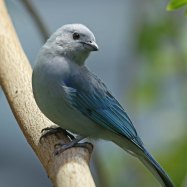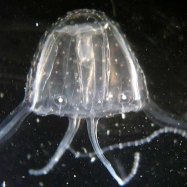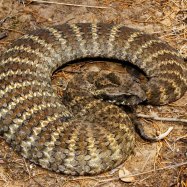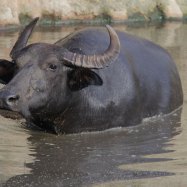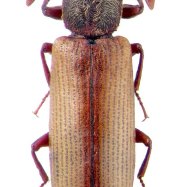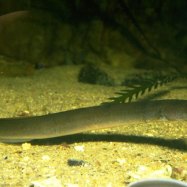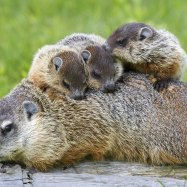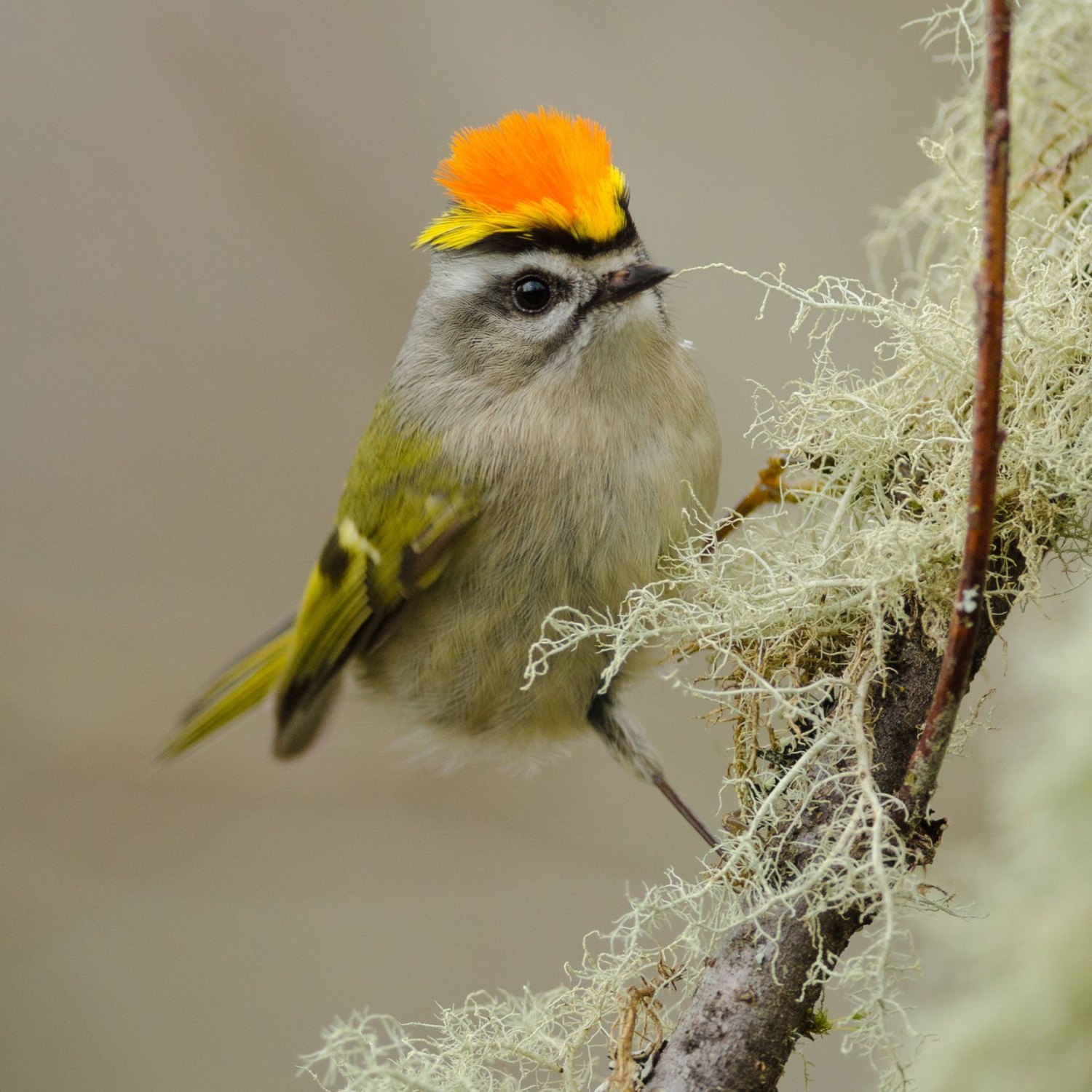
Golden Crowned Kinglet
3.5 - 4.3 inches
Meet the Golden Crowned Kinglet, a small and compact bird with a vibrant yellow and black crown. Found in different parts of the US and Canada, this charming creature belongs to the Regulidae family. Keep an eye out for its 3.5-4.3 inch body as it flits through coniferous forests and gardens. #GoldenCrownedKinglet #birds #wildlife #nature
Animal Details Summary:
Common Name: Golden Crowned Kinglet
Kingdom: Animalia
Habitat: Coniferous forests, mixed forests, and boreal forests
The Mighty and Mysterious Golden Crowned Kinglet: A Jewel of North America
The forests of North America hold many hidden treasures, and among them is the tiny and elusive Golden Crowned Kinglet (Regulus satrapa). Measuring only 3.5-4.3 inches in length, this tiny bird may be easy to miss, but it is truly a remarkable and fascinating creature Golden Crowned Kinglet. With its striking coloration, unique adaptations, and intricate behaviors, the Golden Crowned Kinglet has captured the attention and curiosity of bird enthusiasts and researchers alike.A Royal Introduction
The Golden Crowned Kinglet belongs to the kingdom Animalia, phylum Chordata, and class Aves, making it a member of the vast and diverse world of birds. It is a part of the order Passeriformes, also known as perching birds, and the family Regulidae, a family that includes six other species of kinglets. The scientific name satrapa is derived from the Latin word "satrap," meaning "governor," which is a nod to the crown-like stripe on its head, reminiscent of a king's crown.This tiny bird is commonly known as the Golden Crowned Kinglet due to the striking golden or orange stripe on its black crown. It is widespread throughout the United States and Canada, making its home in various regions, including Alaska, Pacific Northwest, Rocky Mountains, and northeastern states. Despite its small size, the Golden Crowned Kinglet has adapted to thrive in a wide range of habitats, making it a local resident in many different environments.
Home Sweet Home
Golden Crowned Kinglets can be found in coniferous forests, mixed forests, and boreal forests, making their habitats predominantly in the northern parts of their range. These birds are highly territorial and can be found in both deciduous and evergreen trees, often near water sources Garden Eel. They are non-migratory, making their homes in the same area year-round, unless extreme weather conditions force them to relocate.These small but mighty birds have impressive nesting habits, constructing intricately woven nests made of moss, spider webs, and lichens. These nests are often hidden deep in the thick foliage of trees, adding another layer of mystique to these elusive creatures. Golden Crowned Kinglets are monogamous and breed from May to July, laying 6-12 eggs per clutch. The females incubate the eggs, while the males provide food and protection for the nest.
An Insectivorous Diet
Golden Crowned Kinglets are primarily insectivorous, meaning they feed on insects, spiders, and other small invertebrates. They have adapted unique foraging behaviors that allow them to hunt for food in their dense forest habitats. These include gleaning, where the birds pick insects off leaves and branches, and hover-gleaning, where they hover in front of foliage, snatching insects on the go.To support their high metabolism, Golden Crowned Kinglets need to eat almost their body weight in insects daily. They have a fast metabolism, and their small size makes them vulnerable to cold temperatures, so they must constantly refuel with food to maintain their body temperature. In the winter months, when food is scarce, these birds have a remarkable ability to go into a state of torpor, reducing their metabolic rate and conserving energy to survive the cold.
A Colorful Camouflage
Golden Crowned Kinglets have a unique and striking coloration, which serves as both a source of beauty and a functional adaptation. Their olive-green plumage blends in perfectly with the dense foliage of their forest homes, making them almost invisible to predators. The bright yellow undersides serve as a visual warning to potential predators of the bird's distastefulness, as they can produce a sticky, bitter substance when threatened.A distinctive feature of the Golden Crowned Kinglet is its black wings, adorned with two white wingbars. These wingbars also serve as a form of camouflage, breaking up the bird's silhouette and making them harder to spot amidst the greenery. But it is the black crown with its central golden or orange stripe that gives this bird its name and makes it truly stand out. It is believed that the brighter the Orange stripe, the more dominant the bird is within its social group.
A Small but Mighty Hunter
Despite its small size, the Golden Crowned Kinglet is a fierce and agile hunter. Its compact body shape, with short, rounded wings, allows it to maneuver quickly and easily through dense tree branches. This makes it a skilled aerial hunter, as well as a king of horizontal movement, foraging for insects on leaves and branches.Apart from their physical adaptations, Golden Crowned Kinglets have several unique behaviors that aid in their survival. For instance, they often join mixed-species foraging flocks, where they can take advantage of the increased safety and food availability in numbers. They also have the ability to hang upside down on branches, a skill that is useful when searching for insects hidden underneath leaves.
A Natural Beauty
The Golden Crowned Kinglet is not only a marvel of adaptation and survival but also a stunning creature to behold. With its olive-green and yellow coloration, black and white wings, and a crown that shines like gold, it is a true gem of North American forests. Its small size, coupled with its elusive and shy nature, make it a challenge to spot and photograph, but also adds to its enigmatic charm.In recent years, birdwatching has gained popularity, and the Golden Crowned Kinglet has become a favorite among enthusiasts for its distinctive appearance and intriguing behavior. Through careful observation and study, researchers are discovering more about these birds and their importance in maintaining the balance of their forest ecosystems.
Threats and Conservation
Although Golden Crowned Kinglets are not currently considered endangered, their habitat faces several threats, including deforestation and climate change. Loss of forested areas due to urbanization and agriculture poses a significant risk to these birds, as they rely on the dense foliage for shelter and foraging. Climate change is also impacting their habitat, with warmer temperatures and changes in precipitation patterns affecting the availability of food and nesting sites.As with many other species, the best way to conserve and protect Golden Crowned Kinglets is by preserving and protecting their natural habitats. These tiny but vital creatures play a crucial role in their ecosystems, and it is our responsibility to ensure their survival for generations to come.
Unlocking the Mysteries
Golden Crowned Kinglets may be small, but they are mighty, with their impressive adaptations, fascinating behaviors, and striking appearance. As we continue to explore and discover the hidden treasures of our natural world, these elusive birds continue to captivate and intrigue us. With their presence in our forests, the Golden Crowned Kinglets add a touch of magic to our surroundings and remind us of the wonders of nature. So the next time you walk through a coniferous forest, keep your eyes and ears open, and you may just catch a glimpse of this mighty and mysterious jewel of North America, the Golden Crowned Kinglet.

Golden Crowned Kinglet
Animal Details Golden Crowned Kinglet - Scientific Name: Regulus satrapa
- Category: Animals G
- Scientific Name: Regulus satrapa
- Common Name: Golden Crowned Kinglet
- Kingdom: Animalia
- Phylum: Chordata
- Class: Aves
- Order: Passeriformes
- Family: Regulidae
- Habitat: Coniferous forests, mixed forests, and boreal forests
- Feeding Method: Insectivorous
- Geographical Distribution: North America
- Country of Origin: United States and Canada
- Location: Golden Crowned Kinglets are found in various regions of the United States and Canada, including Alaska, Pacific Northwest, Rocky Mountains, and northeastern states.
- Animal Coloration: Olive-green with yellow undersides, black wings with two white wingbars, and a black crown with a golden or orange central stripe.
- Body Shape: Small and compact
- Length: 3.5 - 4.3 inches
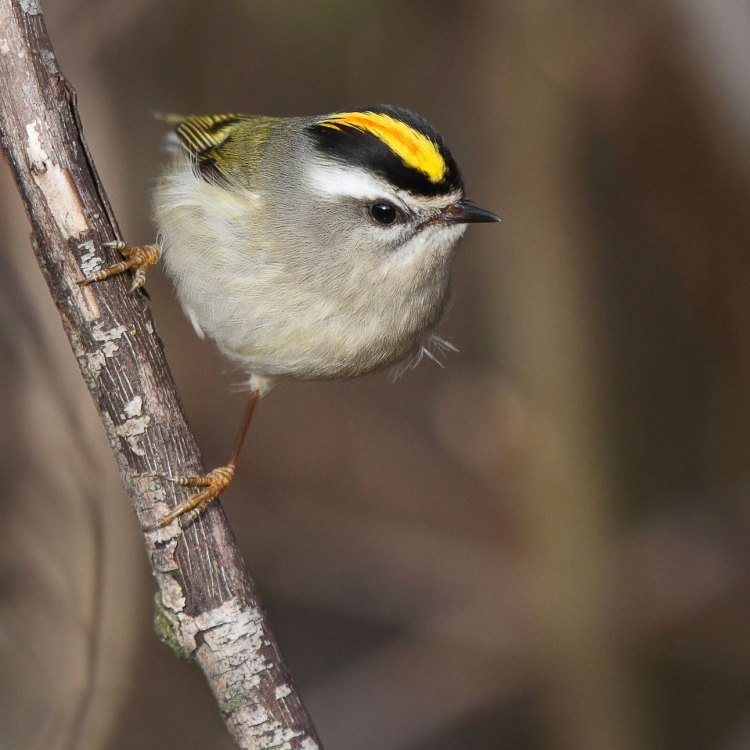
Golden Crowned Kinglet
- Adult Size: Small
- Average Lifespan: 5-6 years
- Reproduction: Golden Crowned Kinglets breed once per year during the summer months.
- Reproductive Behavior: The male establishes a territory and attracts a female through song displays. The female builds a cup-shaped nest which she lines with feathers and hair. She lays 6-11 eggs and incubates them for about 14 days. Both parents take turns feeding the chicks until they fledge after about 15-17 days.
- Sound or Call: The song of the Golden Crowned Kinglet consists of high-pitched trills and call notes that are rapid and musical sounding.
- Migration Pattern: Migratory
- Social Groups: Generally solitary or found in small family groups
- Behavior: Active and agile climbers, often seen hanging upside down as they search for insects in the tree canopy
- Threats: Habitat loss due to deforestation, climate change, and predation by cats
- Conservation Status: Least Concern
- Impact on Ecosystem: Golden Crowned Kinglets play a role in controlling insect populations.
- Human Use: They have no significant direct human use.
- Distinctive Features: Golden crown on the head, black and white wingbars, olive-green plumage
- Interesting Facts: 1. Despite their small size, Golden Crowned Kinglets are known for their vigorous and energetic behavior. 2. They have one of the highest recorded densities of any bird species. 3. Golden Crowned Kinglets have the ability to survive in extremely cold temperatures due to their high metabolic rate and thick plumage. 4. They are known for their high-pitched song, which has been described as sounding like a tiny flute. 5. These birds are often found in mixed flocks with other small songbirds during migration.
- Predator: Predators of Golden Crowned Kinglets include birds of prey such as owls and accipiters, as well as domestic cats.
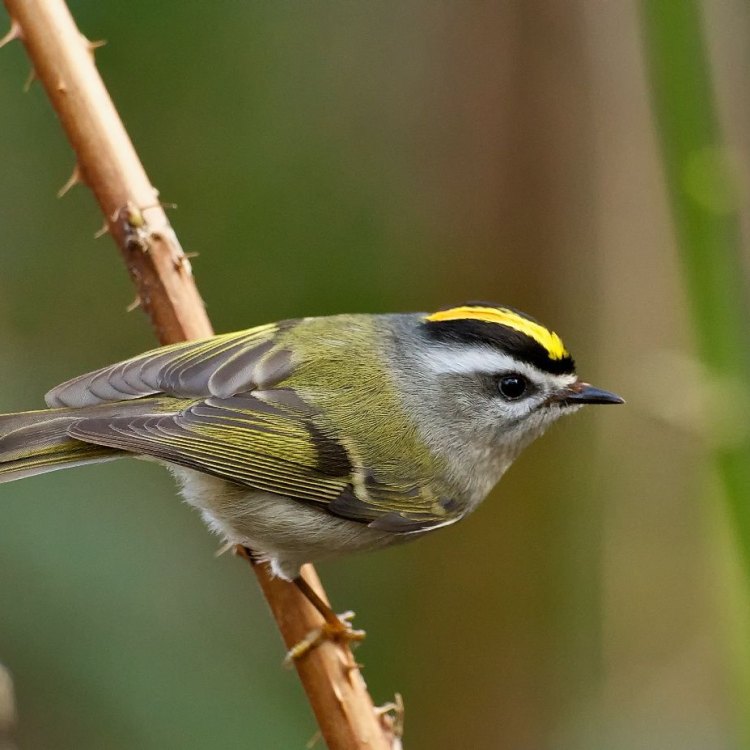
Regulus satrapa
The Active and Energetic Golden Crowned Kinglet: A Small but Mighty Bird
With its bright golden crown, striking black and white wingbars, and olive-green plumage, the golden crowned kinglet (Regulus satrapa) is a sight to behold. Despite its small size, this tiny bird packs a punch with its active and energetic behavior. From its reproduction and migration patterns to its threats and conservation status, there is much to learn about this fascinating species.Size and Lifespan
The golden crowned kinglet is a small bird, measuring only about 4 inches in length PeaceOfAnimals.Com. It is typically found weighing between 0.17 to 0.32 ounces. Despite its diminutive size, this bird has a relatively long lifespan compared to other small songbirds, living an average of 5-6 years in the wild.Reproduction Behavior
Like many other songbirds, golden crowned kinglets are monogamous and breed once per year during the summer months. During this time, the male establishes a territory and attracts a female through song displays. The male's song consists of trills and call notes that are high-pitched and rapid, making it sound like a tiny flute.Once a pair has formed, the female will build a cup-shaped nest out of grass, bark strips, and spider webs. She lines the nest with feathers and hair for insulation Green June Beetle. The female will lay 6-11 eggs and incubate them for about 14 days. After hatching, both parents take turns feeding the chicks until they fledge after 15-17 days.
Migration and Social Groups
Golden crowned kinglets are migratory birds, meaning they travel long distances to reach their breeding and wintering grounds. They typically migrate at night, using the stars to guide them. During migration, these birds are often found in mixed flocks with other small songbirds such as warblers and vireos.When not migrating, golden crowned kinglets are generally solitary birds or may be found in small family groups. They are active and agile climbers, often seen hanging upside down in search of insects in the tree canopy.
Threats and Conservation Status
Like many other bird species, golden crowned kinglets face threats due to habitat loss caused by deforestation and climate change. The destruction of their nesting sites puts these birds at risk. Additionally, predation by cats is a significant threat to these small birds.Despite these threats, the golden crowned kinglet is currently listed as "Least Concern" on the International Union for Conservation of Nature (IUCN) Red List. This means that the species is not at immediate risk of extinction.
Impact on Ecosystem and Human Use
Golden crowned kinglets play a vital role in controlling insect populations. They are known to consume large numbers of insects, such as spiders, beetles, and flies, thus playing a direct role in maintaining the balance of their ecosystems.However, these birds have no significant direct human use. They are not hunted for food or their feathers, and their overall population is not significantly impacted by human activities.
Distinctive Features and Interesting Facts
The golden crowned kinglet is easily recognizable due to its distinctive features. Apart from its golden crown, it has black and white wingbars and an olive-green plumage.Apart from its appearance, there are also some interesting facts about this bird. Despite their small size, golden crowned kinglets have one of the highest recorded densities of any bird species. This means that they are found in high numbers within their range.
Their high metabolic rate and thick plumage allow them to survive in extremely cold temperatures, as low as -40 degrees Fahrenheit. This impressive ability helps them thrive in their northern breeding grounds, where temperatures can drop drastically.
Predators
Like most bird species, golden crowned kinglets have predators. Birds of prey such as owls and accipiters are known to prey on these small birds. Additionally, domestic cats can also pose a threat to these delicate creatures.In conclusion, the golden crowned kinglet may be small, but it is a mighty and fascinating bird. Its active and energetic behavior, reproductive patterns, migration routes, and distinctive features make it a captivating species to learn about. While they face threats to their survival, their role in controlling insect populations and their relatively stable conservation status make them an essential part of our ecosystems. Next time you're out in nature, keep an eye out for this small but remarkable bird.
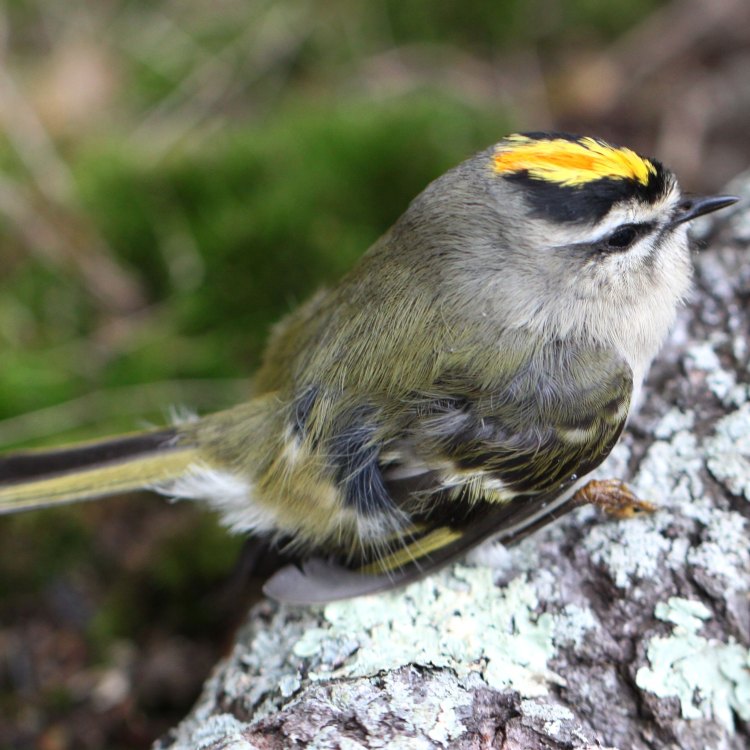
The Mighty and Mysterious Golden Crowned Kinglet: A Jewel of North America
Disclaimer: The content provided is for informational purposes only. We cannot guarantee the accuracy of the information on this page 100%. All information provided here may change without prior notice.

